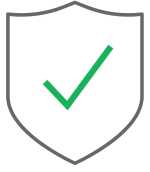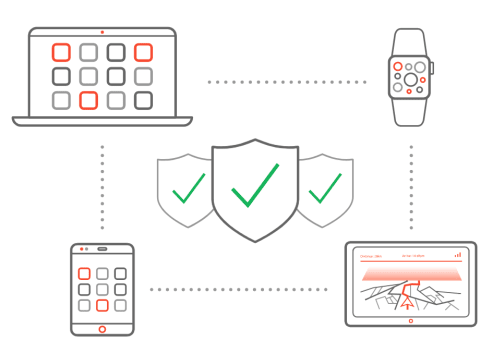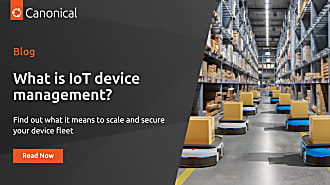Vergil Yotov
on 5 November 2021
The Internet of Things adoption is growing faster than ever before. As connected devices become more affordable, they find their place in many aspects of our lives. Users worldwide can benefit from a large ecosystem of IoT solutions. However, this rapid growth comes at a cost. Different IoT edge devices have different interfaces, speak different languages and many are not supported soon after manufacturing. Over time, this presents challenges not only to usability, but also to security and privacy.

To confront those challenges, responsible vendors have started to adopt IoT management solutions. If you want to find more about what IoT device management is, this blog is for you. But what really hides behind the concept of IoT edge devices?
IoT edge devices
When we talk about an edge device, we usually mean a device at the edge of a network. This would be the last device that is connected to the Internet or a dedicated network directly. An IoT edge device can perform a dedicated IoT function itself or enable the connectivity of other things not connected to the Internet. Typical examples for such devices are edge servers, routers or IoT gateways. Now, let’s take a closer look at why you should use an IoT device management platform for your next IoT project.

#1 Easy deployment
It feels great when, after a lot of careful planning and engineering, a device is ready to be shipped. But when the time comes to install an IoT appliance on-site, the expense can be surprisingly high due to the effort and skills needed. Specialist labour can cost far more than the hardware and software.
Luckily, the right IoT management solution can sidestep this problem, shortening and simplifying the deployment process significantly by allowing devices to be remotely configured. Over the air (OTA) configuration reduces (and sometimes even eliminates) the need for skilled technicians on site. An appliance with pre-installed management software just needs a network connection and power. The rest of the hard work can be done remotely and automatically.

#2 Automating software updates
Even after a successful initial installation, challenges may arise. The situation in the field can change rapidly. Being able to iterate and adapt is essential to remain competitive. A device management platform helps provide the necessary flexibility.
While it’s difficult (and expensive) to change the hardware, the IoT edge device software can be updated remotely via a device management platform. Your IoT software updates can be rolled out automatically to groups of devices or your entire fleet. In this way, you can benefit from the latest changes that your developers or software vendors have made. Over-the-air updates must be transactional, so devices can roll back to a stable state if a failure occurs.

#3 Securing your fleet
Numerous security vulnerabilities are discovered every day. Since they are present all over the place, IoT edge devices are often targeted by hackers. If left unsecured, they can become a way for an attacker to compromise your corporate network or industrial infrastructure. For this reason, it is important to protect them.
The best protection comes from delivering regular security updates to your IoT devices through a device management solution. Running the latest version of your vendor’s software and underlying operating system is the most reliable way to ensure that all security patches have been applied. Of course, the software itself needs to be maintained regularly over the entire lifespan of an IoT project. An operating system with long term support is essential in securing your IoT solutions.

#4 Efficient troubleshooting
More devices shouldn’t mean more problems. Sometimes even a thoroughly tested solution can fail in unexpected ways in the field. Physical troubleshooting can be difficult, expensive and sometimes even impossible. A good remote management platform provides the means for remotely troubleshooting and fixing any issues that might arise in the field. For small and midsize IoT projects secure remote access to the IoT edge device can allow an engineer to work remotely on resolving an issue. At scale, this approach becomes unsustainable. Then the ability to automatically detect issues, report, reproduce and fix them becomes crucial in providing good customer experience.

#5 Integrating seamlessly
Your IoT setup has many different variables to consider: hardware vendors, project requirements, deployment, networking and communication protocols. An IoT management system can help you organise your appliances and remotely reconfigure them for a range of application scenarios. Being able to integrate your iot edge devices in a consistent way with cloud services plays an essential role in the success of a project. An IoT device management platform can act as a bridge between your edge data and the cloud. Once transported, your edge data can be stored, processed and analysed. This allows you to maximise the value from your infrastructure and plan for future success.
Ready to innovate?
Whether you are just starting up, bringing your concept to market, or part of an already established enterprise, you can get in touch with us here.
If you want to learn more about bootstrapping your IoT project with all of those best practices, then this whitepaper is for you.
We have the right expertise and infrastructure to launch and support your IoT product journey. Tell us your story and let’s work together!



